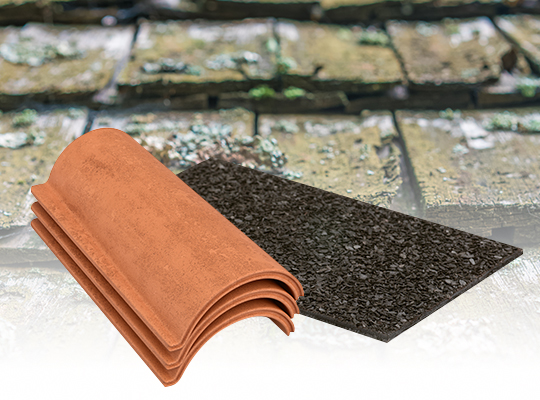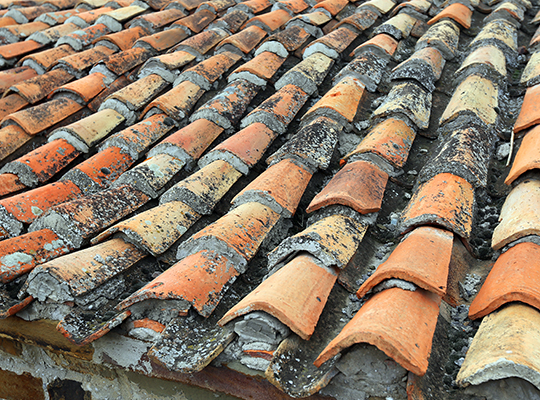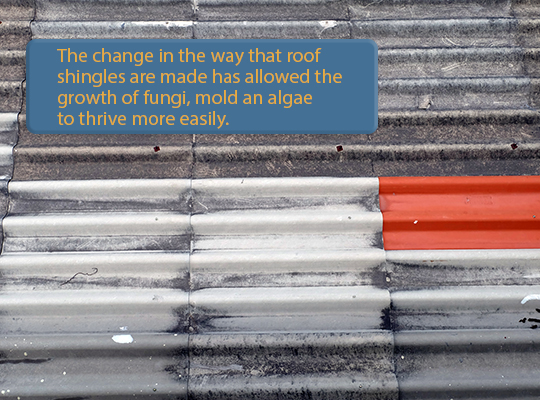How does the type of shingles affect mold and algae?
Now that roofing material has changed to mostly fiberglass and limestone we are seeing more homes with mold issues. Limestone is the algae’s food source. The change in the way that roof shingles are made has allowed the growth of fungi, mold, and algae to thrive more easily. Algae needs three things to grow: heat, moisture, and nutrients.
Learn more about roof mold and algae inspections from HomeMD
The History Of Roof Shingles
Roof Shingles From 1890 – 1948
Asphalt was soaked into a mat made from felt containing cotton or wool fibers.
Asphalt Roof Shingles From 1949 – 1978
Roof shingles were made from cellulose fibers derived from recycled paper or wood chips to make the asphalt shingle mat.
Limestone Core Fiberglass Roof Shingles From 1978 – Today
An inorganic fiberglass mat is coated with asphalt that is then covered with a protective layer of U.V. resistant, colored ceramic granules. Limestone is used as an inexpensive void filler between individual fiberglass mats. It also provides resistance to fire and weather.
Limestone – Great For Algae, Bad For Shingles
Unfortunately, limestone is a favorite food for “Cyanobacteria Gloeocapsa Magma”, roof algae.
Prior to 1978, Cyanobacteria would starve to death when it landed on your roof – now it thrives on your roof.
As the algae grow, it holds moisture allowing the growth to accelerate.
Read about mold and algae on your roof found during a home inspection
If you think that you have a mold problem call a professional to do inspections and help get rid of the issue. HomeMD specializes in the mold testing as well as all home inspections.



